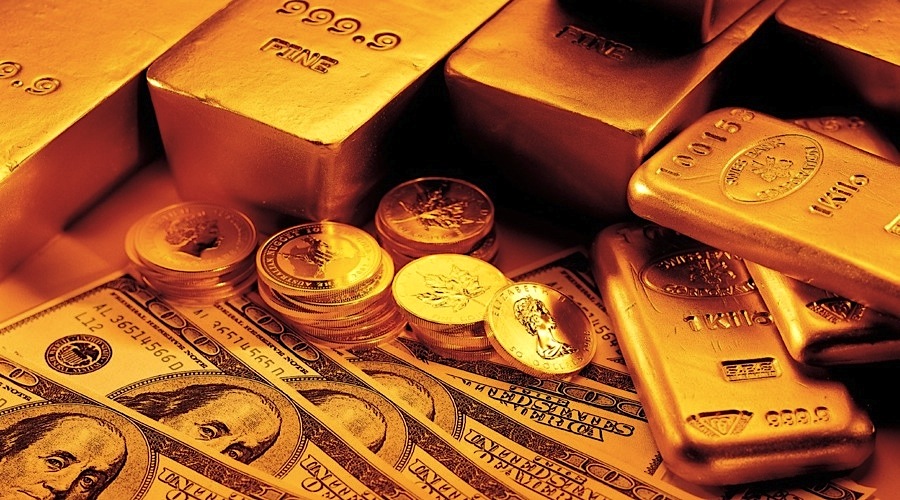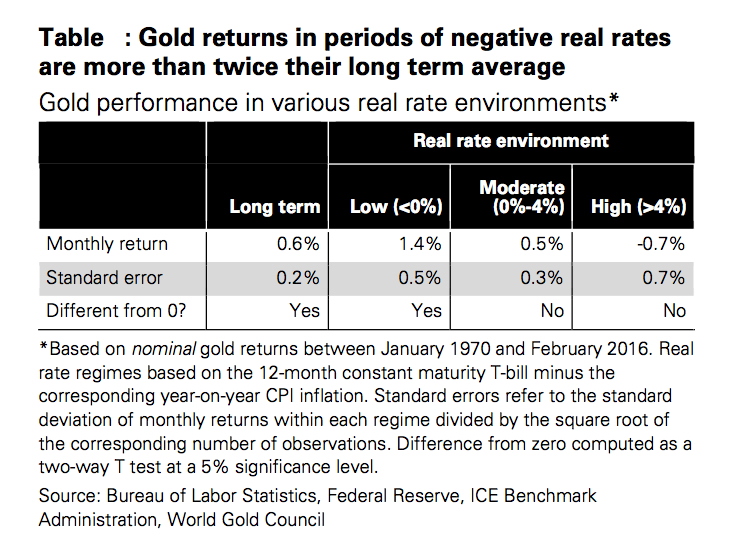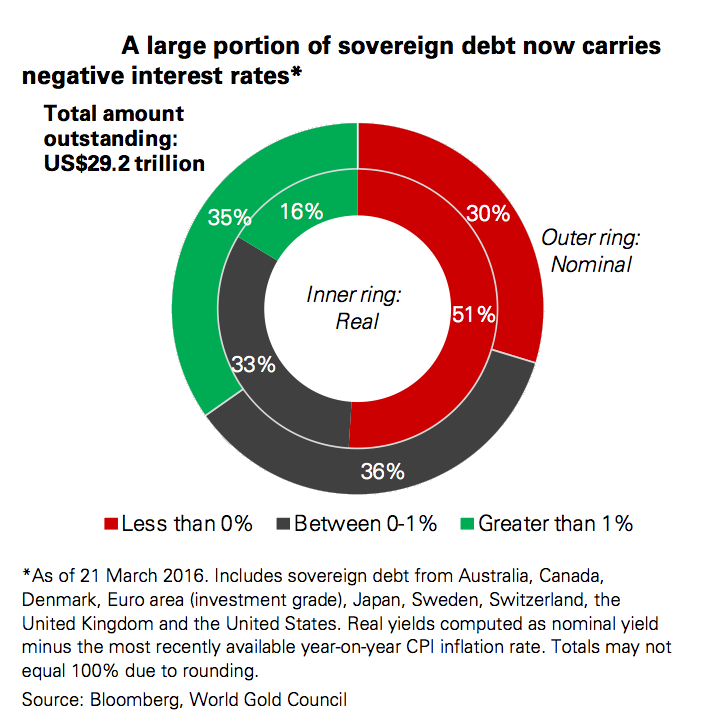Negative rates to boost gold prices, demand to record highs – WGC

Gold is on track to end the first quarter of the year with an important value increase of over 16%, and may soon climb even further thanks to a spike in demand from investors and central banks alike, a report by the World Gold Council shows.
According to the document, released Thursday, negative interest-rate policies (or NIRP) for some of the world’s key central banks, such as the Bank of Japan and the European Central Bank, could change the way investors think about risk, benefitting the yellow metal.
 Long-term, says the gold industry body, NIRP may result in structurally higher demand for the precious metal from both central banks and investors.
Long-term, says the gold industry body, NIRP may result in structurally higher demand for the precious metal from both central banks and investors.
According to the WGC, gold returns tend to be “twice as high as the long-term average” at times of negative real rates, and while “falling rates are generally linked to higher gold prices,” rising rates aren’t always linked to lower prices, it says.
NIRP, the report notes, significantly reduces the likely pool of assets that investors may hold:
In the current negative nominal interest-rate environment, about 30% of high quality sovereign debt (more than US$8 trillion!) is trading with a negative yield, and almost an additional 40% with yields below 1%, as shown below:
 The WGC also expects gold acquisitions by central banks to climb to record amounts this year and beyond.
The WGC also expects gold acquisitions by central banks to climb to record amounts this year and beyond.
“The prolonged presence of low (and now even negative) rates has fundamentally altered the way investors should think about risk and may result in a broader use of assets like gold to manage their portfolios more effectively and preserve their wealth over the long run,” the report concludes.
Read full report here.
{{ commodity.name }}
{{ post.title }}
{{ post.date }}




Comments